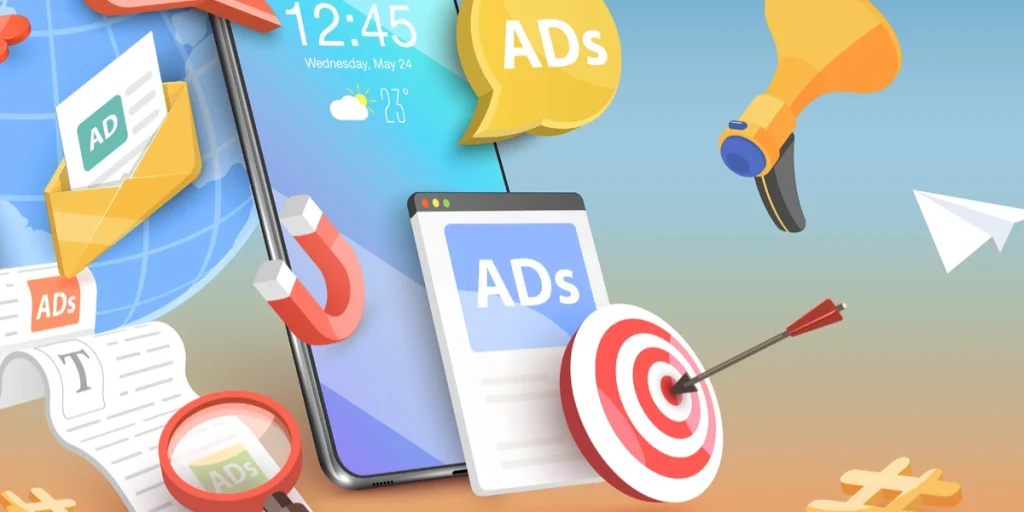Social media has completely transformed how businesses and individuals interact with their audiences, and online course creators are tapping into this shift to grow their reach.
By mastering social media, you can skyrocket enrollments, enhance your course’s visibility, and establish yourself as a trusted authority in your field.
With countless online courses flooding the digital landscape, it’s more important than ever to stand out. Achieving this requires a strategic approach, consistent effort, and smart execution.
In this blog, we will provide practical and actionable social media tips for online course creators to help you attract learners, engage effectively, and drive enrollments.
Whether you’re just starting or looking to refine your approach, these tips will help you maximize your social media efforts and unlock the potential of social platforms to grow your online course business.
Need expert guidance?
Explore our social media marketing services and take your efforts to the next level!
Understanding Your Target Audience

One of the most critical aspects of a successful social media strategy is understanding your audience. Without a clear understanding of who you’re targeting, your efforts may fall flat.
Why Knowing Your Audience Matters
Knowing your audience is the foundation of your social media success. It allows you to create content that resonates with their specific interests, challenges, and needs.
For online course creators, this means tailoring your posts and engagement to address learners’ unique goals.
It can also help you build a community of learners who feel heard, understood, and motivated to take action.
If you’re working with a digital marketing agency, they can provide valuable insights into your audience’s behavior, allowing you to refine your strategy even further.
How to Identify Your Audience
Begin by using social media analytics tools to gather data about your current followers. Platforms like Facebook Insights, Instagram Analytics, and Twitter Analytics offer valuable demographic information.
Also, create surveys, send feedback forms, and ask your existing learners for insights. Ask questions like, “What do you hope to learn?” or “Which social media platform do you use most often?”
Creating Learner Personas
Once you have gathered your audience data, the next step is to create detailed learner personas.
A persona could be as simple as a short profile describing key details about your ideal learner.
For example, if you’re offering a digital marketing course, your persona may be a young professional who is eager to advance their career by acquiring new skills.
You can also develop multiple personas to cater to different groups.
Choosing the Right Social Media Platforms

Not all social media platforms are created equal, and each has its own strengths and unique audience. Choosing the right platforms for your courses is very important.
Evaluating Platform Relevance
It’s essential to pick platforms that align with your course content and audience’s preferences. Here’s how you can evaluate platform relevance:
- Instagram: Perfect for visually driven courses like design, photography, or art. Instagram also allows for quick engagement through Stories and posts.
- LinkedIn: Best for professional courses focused on business, leadership, and career development. LinkedIn allows for in-depth networking and content sharing.
- YouTube: Ideal for long-form educational content, tutorials, and video-based courses.
- Facebook: Offers a great opportunity to build communities through Facebook Groups, plus it’s perfect for running targeted ads.
Data-Driven Decision Making
Use data-driven insights to evaluate platform effectiveness. Research shows that LinkedIn offers a 2x higher conversion rate for B2B content compared to other platforms.
Additionally, Instagram Stories have been shown to engage users significantly, especially for creative courses.
Focus your energy on platforms that best align with your goals.
Creating Engaging Content

When it comes to social media, content is king, but engagement is queen. To attract learners and drive enrollments, your content needs to be both informative and interactive. Keeping up with Facebook trends can help you create relevant and engaging posts that resonate with your audience.
Types of Content to Create
It’s important to vary your content types to keep your audience engaged. Here are some types of content you can use:
- Video Tutorials: Share bite-sized tutorials that highlight key aspects of your course. These can offer potential learners a sneak peek into what they’ll learn.
- Infographics: Condense complex information into easy-to-understand visual formats. Infographics are excellent for providing quick value and piquing interest.
- Stories and Reels: Share behind-the-scenes moments, quick tips, or success stories. Reels and Stories are incredibly effective at maintaining engagement in a short amount of time.
- Polls and Quizzes: These are interactive formats that both educate and engage your audience. They also provide valuable insights into your learners’ interests and needs.
Tips for Storytelling
Good storytelling will make your content memorable. Instead of just talking about what your course offers, tell a compelling story of a student who overcame challenges and achieved success.
Illustrate their journey from initial doubts to achieving their learning goals and make it relatable. This not only demonstrates the value of your course but also builds trust with potential students.
Tools for Content Creation
Content creation doesn’t have to be hard or expensive. Tools like Canva help you design visually stunning graphics even if you have little design experience.
For video content, tools like CapCut allow you to edit and polish your videos to make them look professional.
These tools can help you create highly engaging, professional-quality content to share with your followers.
Utilizing Paid Advertising Effectively

While organic social media efforts are important, paid advertising services can significantly accelerate your growth by reaching a broader audience.
Overview of Social Media Ads
Social media platforms like Facebook, Instagram, and LinkedIn have robust advertising systems that allow you to target specific demographics.
Whether you want to promote an upcoming webinar, share your course launch, or simply direct traffic to your course website, paid ads can help you reach the right audience faster.
Setting Up Campaigns
Start by defining your campaign goal: Is it to increase enrollments, promote a free resource, or raise awareness about your course?
Make sure to segment your audience based on factors like job title, age, interests, and location to ensure that your ads reach the people most likely to benefit from your course.
Also, optimize your ad visuals and copy to clearly convey the value of your course.
Budgeting and ROI
It’s always smart to start with a small ad budget to test the waters. Experiment with different visuals, copy, and calls-to-action (CTAs) to see what resonates best with your audience.
Once you have data on the performance of your ads, you can optimize for better ROI and scale up your efforts.
Leveraging User-Generated Content and Testimonials

User-generated content (UGC) is an excellent way to showcase the success stories of real students and build social proof for your course.
Value of Testimonials
A great testimonial can be the deciding factor for a potential learner.
Video testimonials, written reviews, and detailed case studies give future students a glimpse into what they can expect.
When someone shares their story about how your course helped them, it’s far more convincing than any marketing material you create yourself.
Encouraging User-Generated Content
Create campaigns that encourage your students to share their experiences. Consider launching a hashtag campaign, such as #LearnWith[YourBrand], where students share their success stories or projects they’ve completed after taking your course.
User-generated content humanizes your brand and builds trust within your community.
Example Campaign
“Share your course success story with #LearnWith[YourBrand]. The best story wins a free advanced course module!”
Hosting Live Sessions and Webinars

Hosting live sessions can help you engage with your audience in real time and create a deeper connection with potential students.
Benefits of Live Sessions
Live sessions are great for building trust with your audience, answering their questions, and giving them a taste of your teaching style.
They also provide an opportunity to address concerns and give direct feedback to interested learners.
Additionally, live sessions are an excellent way to showcase the value of your course in an interactive way.
Topics for Live Sessions
Consider hosting live sessions such as:
- “Meet Your Instructor”: Introduce yourself, share your background, and explain why you’re passionate about teaching the course.
- Q&A Sessions: Answer questions that prospective learners might have about your course.
- Workshops: Offer a small taste of your course material for free during a live workshop. This can encourage sign-ups.
Tools and Promotion
Promote your live sessions across multiple platforms, including social media posts, email newsletters, and reminders.
Platforms like Instagram Live, Facebook Live, and Zoom are excellent tools for hosting live events that allow you to connect directly with your audience.
Collaborating with Influencers and Affiliates

Partnering with influencers and affiliates can significantly amplify your reach by leveraging their established audiences.
Finding the Right Partners
Identify influencers who align with your niche. For example, a fitness influencer can promote your health and wellness course.
Similarly, affiliate marketers can share your course with their audiences and earn a commission for each student they refer.
Structuring Collaborations
Set clear terms with influencers and affiliates, such as offering exclusive discount codes or a percentage of each sale they drive.
Collaboration can help expose your course to a new, relevant audience while maintaining credibility.
Example
“Partner with micro-influencers in your niche who have highly engaged followers for authentic recommendations and increased visibility.”
Tracking and Optimizing Performance

To ensure that your social media efforts are successful, it’s crucial to track your performance and make data-driven decisions.
Key Metrics to Monitor
Track metrics like:
- Engagement Rate: Likes, comments, and shares that demonstrate how interactive your audience is.
- Click-Through Rate (CTR): How many people click on your links to learn more about your course.
- Conversion Rate: How many people ultimately enroll in your course after seeing your content.
Tools for Analysis
Use tools like Hootsuite, Buffer, or Google Analytics to track and analyze the performance of your content and campaigns.
These insights will allow you to identify which strategies are working and adjust your approach accordingly.
Optimization Tips
Make use of A/B testing for your ad creatives and content to figure out what resonates best with your audience.
If you find that videos perform better than static images, focus more on video content.
Regular optimization can significantly enhance your results.
Conclusion
Social media offers unparalleled opportunities for online course creators to connect with their audience and drive enrollments.
By following these social media tips for online course creators, you can maximize your reach, engage potential students, and position yourself as a trusted educator in your field.
Start implementing these tips today, and watch your course enrollments soar. Success is just a few strategic steps away!
If you’re ready to elevate your online course business to the next level, Get Catalyzed can help you craft and execute a winning social media strategy. Let our team of experts handle the complexities of social media marketing while you focus on creating impactful courses. Contact us today to start your journey toward growth and success!



